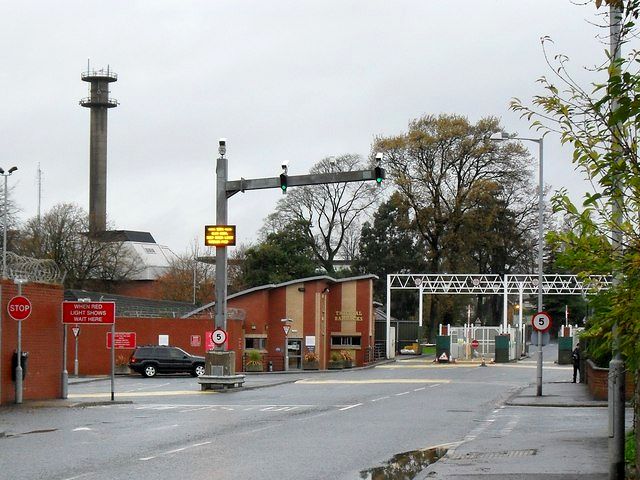Active 1922–2009 Branch British Army | Country United Kingdom Type Command | |
 | ||
Garrison/HQ Thiepval Barracks, Lisburn | ||
HQ Northern Ireland was the formation responsible for the British Army in and around Northern Ireland. It was established in 1922 and disbanded, replaced by a brigade-level Army Reserve formation, 38 (Irish) Brigade, in 2009.
Contents
History
Northern Ireland District was established following the partition of Ireland in 1922 and was originally based at Victoria Barracks, Belfast. During the Second World War the role of the District was enhanced from internal security to that of combatting any threat of invasion from the Republic of Ireland. The status of the formation was upgraded from District to Command under the leadership of Lieutenant General Sir John Hackett in 1961.
With the emergence of the Troubles, which started in Northern Ireland in the late 1960s, the role of HQ Northern Ireland increased substantially as it took responsibility for "assisting in the defeat of terrorism and the maintenance of public order" and by 1972 it had 27,000 troops under its command.
On 30 January 2006 the Secretary of State for Defence announced to the House of Commons that 19 Light Brigade, then stationed at Catterick, would be re-roling into a light brigade and relocating to Scotland and Northern Ireland. On 10 May 2006 it was further announced that "in addition to the HQ and other units of 19 Light Brigade that we expect to relocate to Northern Ireland in 2007 and 2008, a new and non-deployable regional brigade headquarters will form at Thiepval Barracks, Lisburn. The current 107 (Ulster) Brigade, based at Ballymena, will merge on 15 December this year into HQ 39 Infantry Brigade, which will itself be replaced by the new regional brigade headquarters, 38th (Irish) Brigade under the command of the 2nd Division, on 1 August 2007".
On 6 August 2007 HQ Northern Ireland and 38 (Irish) Brigade combined to create a single transitional headquarters with a two star General Officer Commanding. At the same time the British military presence in the Province was reduced to about 5,000 troops.
On 1 January 2009 the name of the formation changed to 38 (Irish) Brigade and HQ Northern Ireland was dissolved with residual regional functions being migrated to HQ 2 Division in Edinburgh.
Other services had a smaller 'footprint' in the province during the Troubles. The RAF's presence in Northern Ireland was based at RAF Aldergrove, and 230 Squadron was based there for many years, among other units. The Royal Navy no longer maintain a regular presence in Northern Ireland waters with the disbandment of the Northern Ireland Squadron. The Royal Navy's main presence is HMS Hibernia, which serves as the HQ of the Royal Naval Reserve's Ulster Division.
HQ Northern Ireland formations, December 1989
In December 1989 the following units were permanently based in Northern Ireland under command of HQ Northern Ireland. The three infantry battalions on a 6-month rotation to Northern Ireland are shown in italics; smaller units on a 6-month roulement to Northern Ireland are not shown. Two Territorial Army battalions stationed in Northern Ireland were to move immediately to Germany to reinforce British Army of the Rhine (BAOR) in case of war between NATO and the Warsaw Pact. For administrative purposes these units were under command of brigade HQs based in Northern Ireland during peacetime. Both units are shown in the list below in italics followed by the higher command they were to reinforce in Germany in brackets:
List of units c.2011
General Officers Commanding Northern Ireland
General Officers Commanding have included:
Northern Ireland District
Northern Ireland Command
